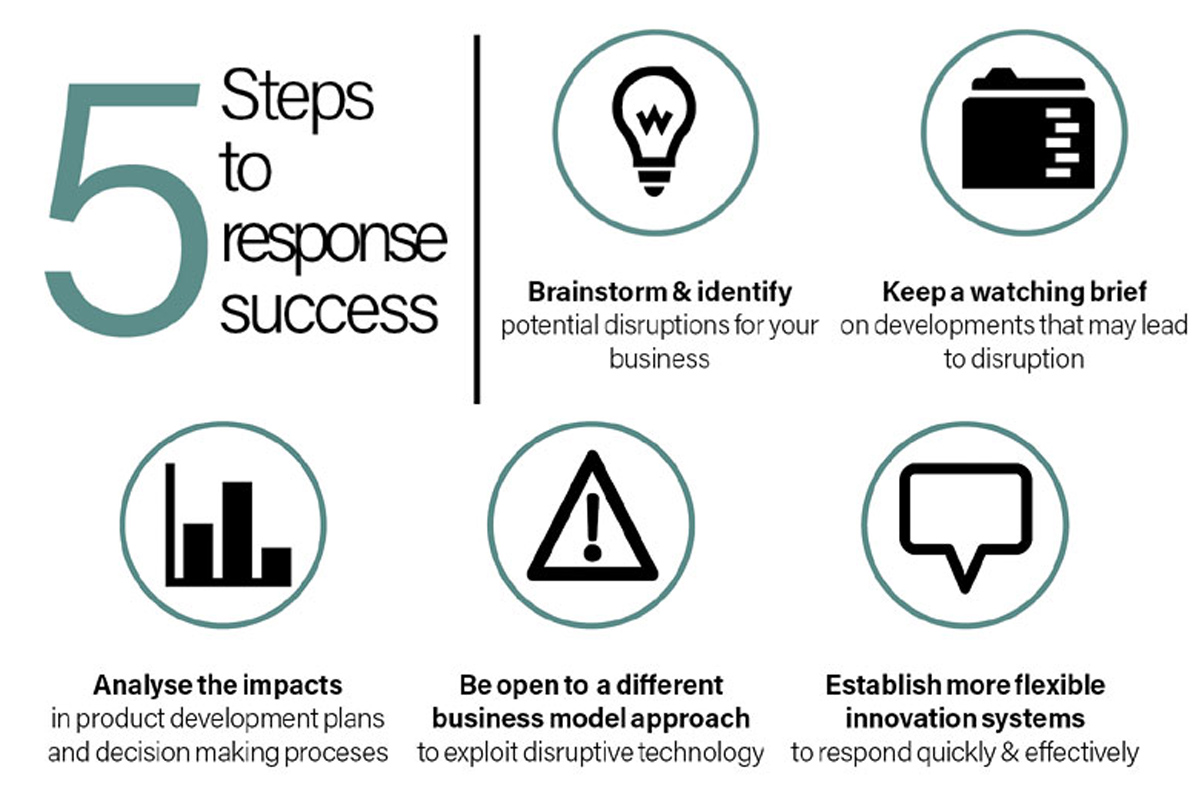We work in an industry based on well-established and traditional materials. Metals have been fabricated for millennia. Applications have historically ranged from warfare, tooling, building and construction and are now evolving into emerging applications such as geothermal energy extraction and biomedical technologies.
Metals, such as steel, are known for their high strength, ductility, and formability. They are widely accepted as being reliable materials. However, new materials, such as graphene and other polymers are being developed and refined that may have comparable or different value propositions to metals.

New fabrication processes, such as additive manufacturing (or 3D printing), are also rapidly being refined and finding more mainstream acceptance. Combined, these have real potential to disrupt our markets and more particularly our business models.
How many of us are reliant upon a single high margin product or service for profitability? The rules for disruption (see below) mean that often-times we are complacent to new products that we initially don’t see as a threat to us. They might come in at low cost but low quality and grab a small part of the market that we are happy to forfeit. But then, their performance may be improved and then they start to expand their market acceptance and increasingly compete with traditional products.
The classic case study is the camera, which has continuously been disrupted and with many companies falling by the wayside because they over-relied upon a single product as being the market leader and underestimated market entrants with initially niche value-propositions. As an industry, we need to start thinking about how we might respond to new technologies or business models disrupting our industry.
So, how should we respond?
- Brainstorm to identify potential disruptions.
- Keep a watching brief on developments that may lead to disruption.
- In product development plans/decision-making processes, include an analysis of the impacts of disruptive technologies. For example, should we consider metal hybrid systems or composites as a way of utilising the beneficial properties of disruptive technologies, while still maintaining the benefits of metals?
- Note that exploitation of disruptive technologies will require a different approach than the “norm” and may require a completely UNFAMILIAR (and therefore hard to gain support for) business model.
- Start to establish more flexible innovation systems to prepare your business to respond nimbly and promptly to disruptive innovation (threats or opportunities).
As a HERA member, you will be pleased to know that we’ve started to introduce research strategies to help the industry consider and respond to emerging, potentially disruptive, technologies. If you have any thoughts you’d like to share, you can contact our Director Dr Wolfgang Scholz to discuss further.
